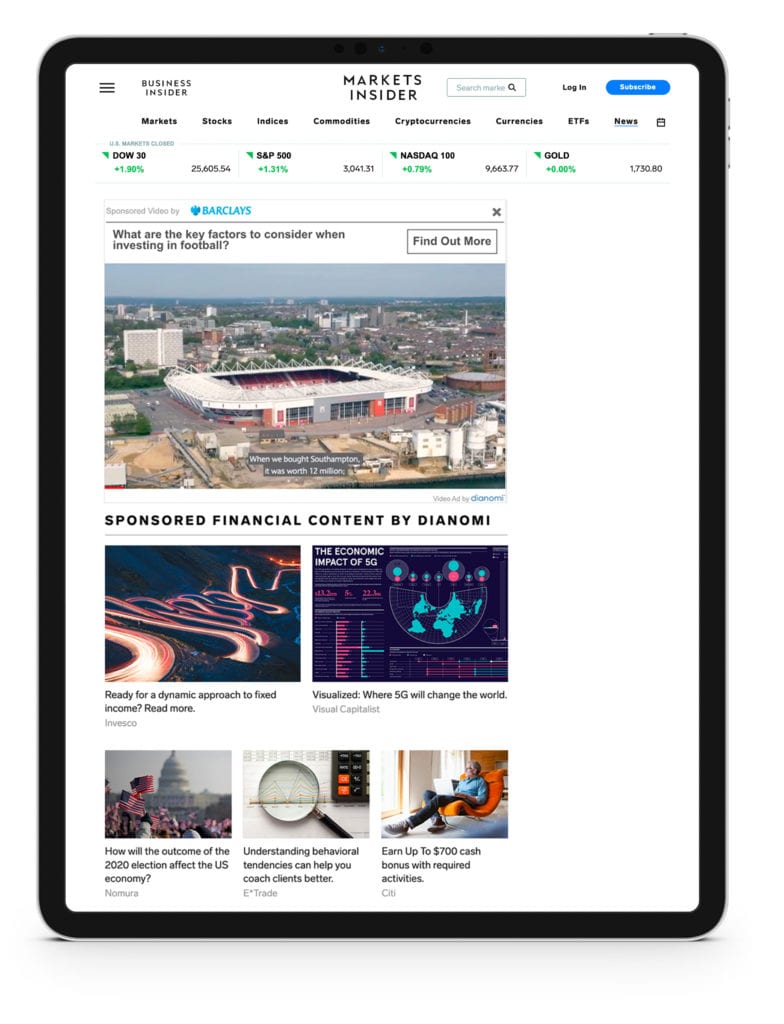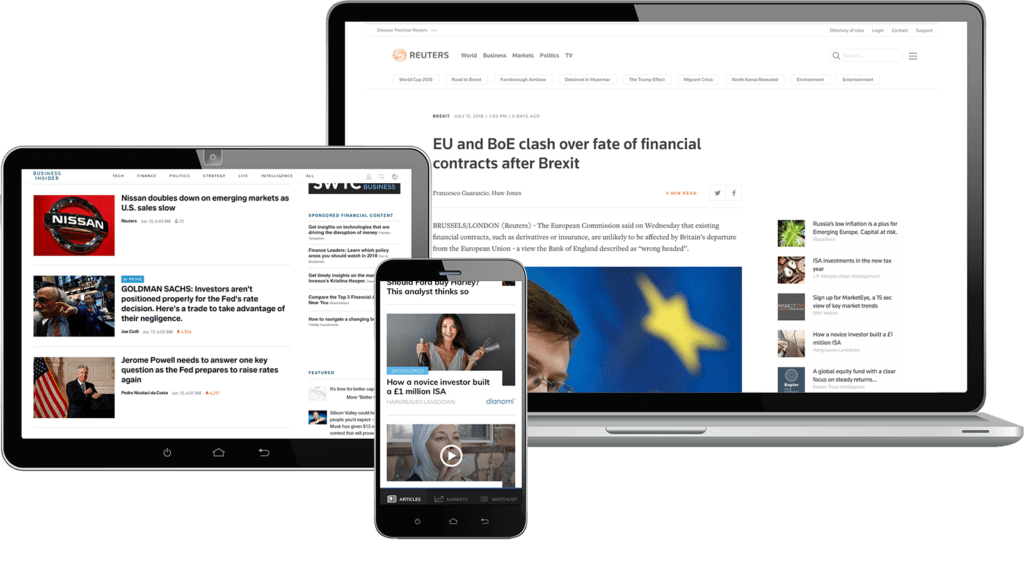Originally written for The Financial Brand By Bill Streeter, Editor
Is Google knocking the legs out from under its own success story just as the pandemic reemphasized the importance of digital marketing? Or is it radically changing its role in digital marketing inclusion in reaction to social unrest?
Google posted a big change to its personalized advertising policies that is throwing a wrench into one of digital marketing’s biggest advantages — targeted ads. The search giant has long had policies in place barring ads targeting consumers based on identity, beliefs or sexuality, but this change drills to the core of what many financial institutions do with their digital campaigns: reach the person most likely to take out a loan or open an account with a highly relevant and timely message.
The new rules, which were set to take effect Oct. 19, 2020, prohibit ad targeting by gender, age, parental status, marital status or zip code. The change applies initially to three broad categories of products and services: Housing, Employment and Credit. According to a Google FAQ, the change applies to all ad formats (text, display, video) and all channels (search, display, video).
Facebook rolled out similar targeting restrictions in summer 2019 in response to a settlement with civil rights advocates who had alleged that the social media giant allowed ads to be targeted in a way that was discriminatory. That plus the social unrest that flared into a major and very public situation beginning in May 2020 may have been a factor in Google’s rule change.
“I believe Google has an underlying goal here to avoid any backlash from not being considered diverse, since they’re allowing marketers to run very targeted campaigns to people [who] fall into ‘buckets’,” says Michael Bertini, Senior Director, Search Strategy for iQuanti.
Ad targeting actually benefits consumers by putting a relevant message in front of them versus the usual noisy media clutter, points out Charlotte Boutz-Connell, Director of Client Experience, Strum. However, she also believes that “it’s vital to balance that benefit with equity and inclusion, and that’s what Google is hoping to accomplish with this change.
For digital marketers, this new rule change comes on top of the pending “cookie-pocalyse” — Google’s January 2020 announcement that it is phasing out use of third-party cookies over the next two years. Given that digital marketing has become even more critical for financial institutions since the pandemic arrived, these changes are unsettling.
“The biggest challenge here,” says James Robert Lay, Founder and CEO of the Digital Growth Institute, “is that each time an ad policy changes, so too must ad strategy change.”
With so many financial marketers stretched thin due to the demands of the COVID crisis, Lay finds that many end up overwhelmed.
Beyond that, the impact on bank and credit union marketing budgets and effectiveness could prove significant.
“Losing the ability to target ads has the potential to force financial brands to spend more to gain the same results,” Lay states. However, there are some potential plusses coming out of Google’s targeting restrictions, as well as alternatives that could ease the blow.
Are Marketers Prepared? If Not, What Happens?
It’s an open question as to how many bank and credit union marketers even know of Google’s new ad targeting rules. Marketers whose name appears in their institution’s Google Ads account would have received emails from Google about the change. Most, however, had to rely on their digital ad agency to notify them. In some cases the agency would simply have handled the change.
Either way, Google required a response. “Advertisers had to login to their Google Ads accounts and accept and acknowledge these policy changes,” explains Paul Evers, EVP and General Manager, Financial Services for Merkle. If they hadn’t, he adds, they will be unable to create any new campaigns until they do. In addition, after Oct. 19 (per Google), any existing campaigns covered by the changes will be disapproved and no longer be served.
“Just like with Facebook, these policy changes from Google make it crystal clear who has the power and control in the digital ad space,” Lay concludes, “and it is not banks and credit unions.”
How the Changes Impact Digital Ad Campaigns
The impact of Google’s targeting changes varies greatly. For instance, most current clients of FI Grow Solutions won’t see much change because the digital marketing firm primarily recommends PPC (pay per click) search advertising and doesn’t target based on age and gender. “We depend on our keyword research to ensure we are targeting the correct people,” explains Ida Burr, Digital Ads Manager.
Some financial institutions, however, do target their ads to specific zip codes, which is no longer allowed, according to Patrick Trayes, Senior Digital Strategist at ZAG Interactive. He points out that Google will still let brands geographically target by state, county, city and metro area.
For financial institutions that use Google’s In-Market audiences to target based on specific interests in, say, auto loans or savings, Trayes says that based on the new rules, such interest-based audiences can still be used, but not if they indicate gender, age, parental status or marital status. “Those audiences could still be added as Observation audiences to see how they perform within the campaign, but not as Targeting audiences where a user needs to be in that group to see the ad,” Trayes explains.
“Many financial institutions are looking for alternative methods to combat the loss of ROI from not being able to get as granular with their age targeting.”
— Michael Bertini, iQuanti
Michael Bertini, by contrast, believes many, if not most, banks and credit unions have specific ad campaigns that use the now-restricted factors to get in front of the ideal target audience. “They’re used by all brands I’ve ever consulted with, and rightfully so. They help you get to the most likely person to purchase your product, which maximizes ROI.”
“Take people looking for a home loan,” Bertini continues. “As a marketer, you’re looking to find what’s common among the people who get approved for these types of loans, and then you use those factors to show ads to more people like them; because they’re more likely to get approved and you get a better ROI.
“Let’s assume that people between the ages of 18 and 26 are less responsible with their loans, so you wouldn’t target them in a campaign,” Bertini suggests. Logically, he continues, “marketers would target a somewhat older group of consumers — such as new parents.”
Under the new rules, “all that changes,” says Bertini. “As a result, many financial institutions are looking for alternative targeting methods.
James Robert Lay, like Bertini, sees a large impact from the change. “The vast majority of financial brands are community-focused and have relied heavily on zip codes to strategically place and serve ads to people with proximity to a physical branch location within the community they live or work in,” he tells The Financial Brand. Further, Lay believes the Google change will negatively impact use of artificial intelligence and machine learning to review current account holder data to identify ideal accounts and to create remarketing lists to target the next best product.
The changes will bring to a halt the most advanced types of financial institution ads that target male and female consumers with both age and gender-specific messages, Lay maintains. For smaller financial institutions, Lay expects the changes could force them out of Google altogether, as the bottom line CPA (cost per acquisition) will no longer make sense for their growth strategy.
Along the same line, Rupert Hodson, CEO of Dianomi, a native advertising platform, states: “Given the highly regulated nature of the financial industry and how relatively conservative their marketing campaigns are as a result, [the Google targeting changes] may lead financial marketers to rethink their strategies.”
Long-Term Effects Also Come with Opportunities
While most of the digital marketing experts contacted agreed that the Google targeting restrictions would diminish ROI to varying degrees, several brought up counterbalancing points.
For example, ZAG Interactive’s Patrick Trayes observes that “Casting a broader net can expose your ads to a larger audience who may be in the market for your services, but who Google hasn’t accurately grouped into the audience you’re trying to target.”
At a broader level, Michael Bertini says marketers need to start building their own “walled garden.”
“You should broaden your view to how paid search and SEO [search engine optimization] can work together to drive more to your target audience,” he states. “Start by taking all your paid data, sitting down with your content teams and crafting a new content calendar based on all those paid insights you have. Then remarket to those people and keep sending them informational life-style content until they convert.”
“Email and SEO are about to enter their second golden age as digital ad challenges continue to increase.”
— James Robert Lay, Digital Growth Institute
That advice relates to a prediction by James Robert Lay that email and SEO are about to enter their second golden age as digital ad challenges continue to increase. Email, like ads, can be hyper-targeted, he points out.
“The biggest difference between email and digital ads is that email lists represent an asset the financial brand owns, while ads are leased on someone’s else digital real estate,” says Lay. “This is why email must now be viewed as a strategic asset. And the same is true for content.”
An overarching point raised by Strum’s Charlotte Boutz-Connell, is that the focus of what Google is seeking to promote through this particular change is diversity, equity and inclusion. These attributes are central to financial institution brands across the country, she maintains. “This is an important time for everybody to contribute to these efforts, and financial institutions have an important role in this work, not only as brands, but as employers.”
In addition, Boutz-Connell believes that to the extent that this change inspires financial marketers to try new things, it could be a driver of new and better approaches and performance ahead.
Lay agrees. “This environmental change creates an opportunity for financial brands and consumers to finally begin to collaborate together,” he states. “It is time for financial marketing, sales, and leadership teams to confidently commit to help first and sell second.” Lay firmly believes that the path forward for financial marketing teams is rooted in “transforming their marketing departments to operate more like a content/media brands.”




















